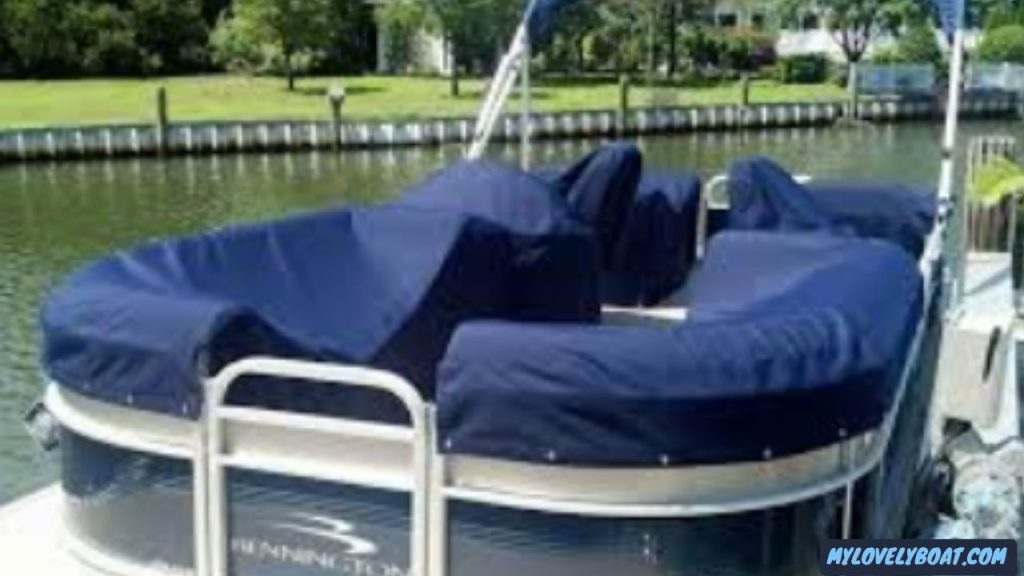How To Store Boat Seat Covers During Winter (7 Secret Tips)

Why You Can Trust: We are dedicated to providing our readers with the most comprehensive, expert advice on a wide range of products. If you buy through our links, we may get a commission.
Regarding boat seat covers, proper storage ensures long-lasting use and minimizes wear and tear. Learning to store these coverings effectively isn’t just a saving grace; it’s a necessity.
This guide provides seven actionable tips on storing your boat seat covers for the off-season and Winter.
Equip yourself with our practical advice, and usher in longevity for your seat covers that will withstand multiple seasons.
Materials and Factors Affecting Boat Seat Covers
Seat covers are made with different materials; the most common are vinyl and leather. The materials have distinct characteristics, making them durable – but they are still susceptible to various forms of damage.
Winter season poses threats like moisture accumulation and cold temperatures that can cause cracking.
Additionally, rodents may take refuge in stored boat seat covers, nibbling away the material. It’s crucial to preempt these threats by deploying an effective storage tactic.
Seven Secret Tips For Preserving Your Boat Seat Covers In Winter and Off-season

Here are seven detailed secret tips to help you store your boat seat covers effectively:
- Clean the covers thoroughly before storing them.
- Avoid Direct Sunlight and Extreme Temperatures
- Use a Breathable Storage Bag or Container
- Store the covers in a cool, dry place.
- Avoid storing the covers in direct sunlight.
- Inspect the surfaces regularly for signs of damage.
- Repair any damage as soon as possible.
Tips -1: Cleaning and Drying the Seat Covers
Cleaning is the primary step in any preservation process. Ensure boat seat covers are thoroughly cleaned before packing them for the winter. Do not rush this step.
Use a soft cloth to remove any dirt or stains on the surface gently. After cleaning, it’s crucial to let the seat covers dry completely. Storing seat covers with residual moisture can lead to the build-up of mould or mildew, which will inevitably damage the material.
To facilitate the drying process, consider using a fan or laying them out in the sun while monitoring the process to prevent fading.
Proper handling and care will prolong the life of your seat covers, ensuring they remain in good condition for future use.
Tips -2: Avoid Direct Sunlight and Extreme Temperatures
The storage location is another critical aspect to consider when storing your boat seat covers. Direct sunlight can make your seat covers fade, changing their original colour.
Moreover, areas with high-temperature fluctuations can cause the seat covers to crack or warp due to continuous expansion and contraction.
Always store your seat cover in a cool, dry place with a constant temperature to maintain its form.
Tips -3: Use a Breathable Storage Bag or Container
Always use a breathable storage bag or container when storing boat seat covers. This is necessary, especially for vinyl covers that can ‘sweat’ when enclosed in airtight containers.
A breathable container allows air to circulate, preventing moisture build-up and subsequent growth of mould or mildew. In addition, ensure the storage area has consistent temperature levels and low humidity to keep the seat covers in optimal condition.
Avoid direct sunlight or damp locations to minimize potential damage and preserve the quality of the materials.
Tips -4: Pest Deterrents
Remember to keep away pests from your seat covers. One can place deterrents like mothballs and cedar chips in the storage container.
These deterrents will ward off potential pests, such as moths, who may view your stored covers as likely nesting or feeding sites. With pest deterrents, you can rest easy, knowing your seat covers are safe from gnawing rodents and insidious insects.
Regularly check the storage area for any signs of pest intrusion and replace the deterrents to ensure ongoing protection.
Tips -5: Covering the Storage Container with a Tarp
Whether in a garage or outdoor shed, your storage container should be covered with a sturdy, weather-resistant tarp.
The tarp is an extra barrier against dust, dirt, and rain. In addition, it also keeps out the light and insulates against temperature fluctuations. The tarp should fit well, covering the entire container without leaving any gaps. Secure it in place to prevent wind lift-off.
Regularly clean the tarp exterior to remove debris and maintain its protective function throughout storage.
Tips -6: Regular Checks
Winter can be pretty long, so it is only wise to check on your stored items occasionally. Make a habit of checking on your seat covers every few weeks.
This way, you will likely catch any issues such as pests, moisture build-up, or temperature problems before they cause substantial damage. Address these issues promptly to prevent escalation.
A quick visit can save your seat covers from irreversible damage, thus prolonging their lifespan and usability.
Tips -7: Avoid Stacking or Compressing
Boat seat covers come in different shapes and sizes. Therefore, it may be tempting to stack or compress them to save on storage space.
However, doing this could cause damage to the covers. It may lead to creases or wrinkles, which may be difficult to remove.
To maintain the integrity of the form and shape of your boat seat covers, store them flat and avoid anything that could cause deformation.
These seven tips offer a comprehensive guideline to safeguard your boat seat covers during the winter effectively. By following each step meticulously, you can ensure that your seat covers remain pristine, ready to be used when the boating season arrives.
Year-Round Maintenance Tips
Maintaining the quality of your boat seat covers throughout the year requires a few best practices:
- Regular Cleaning: Use a mild detergent to clean your cover, preventing permanent stains.
- UV Protectant: Frequently applying a UV protectant can prevent harmful sun damage and fading.
- Rotate Covers: Rotate your seat covers regularly to distribute wear and tear.
- Prompt Repairs: If you notice minor tears or damage, repair them promptly to prevent further deterioration.
- Seasonal Storage: If your boat is not in use, remove the covers and store them properly to maintain their quality and longevity.
You May Also Like:
- The Ultimate Guide to Boat Seat Covers
- How to Repair Damaged Boat Seat Covers
- How to Install Boat Seat Covers
- How to Clean and Maintain Boat Seat Covers
FAQ-
How can I properly clean my boat seat covers before storage?
Removing all the dust and dirt from your boat seat covers before storing them is crucial. Use a mild detergent and warm water to gently clean the seats, ensure every crevice is clean, and then allow them to air dry to prevent mould and mildew.
What storage container should I use for my seat covers?
Opt for a breathable storage bag or container that can keep dust and pests out yet allow airflow to prevent mildew. Avoid plastic bags as they can trap moisture, leading to mould development.
How do I prevent pests from damaging my boat seat covers during storage?
Properly cleaning and drying your seat covers beforehand can reduce pests’ attraction. Also, store them in a cool, dry place and use containers with secure lids to deter pests from entering.
Should I use a tarp when storing my boat seat covers?
While a tarp can provide additional protection, ensure it’s breathable to avoid trapping moisture. Without proper air circulation, your covers may develop mould or mildew.
What type of environment is best for storing my seat covers?
An excellent, dry, and well-ventilated location is ideal for storing boat seat covers. This setting helps to prevent mould growth and other potential damage due to moisture.
How often should I check on my stored seat covers during the off-season?
It’s recommended to check your stored seat covers at least once a month. Regular checks can help you spot potential issues earlier, like moulding or pest damage.
What are some effective DIY methods for repairing torn or damaged seat covers?
For small tears, a simple needle and thread stitch usually works well; you can use marine-grade thread for durability. A patch kit or professional repair may require larger rips to maintain their integrity and functionality.

I am a freelance writer passionate about watersports and the great outdoors. I have many years of experience in the marine industry, and I enjoy sharing my knowledge and expertise with others so that they can get the most out of their boating experiences. I like fishing, kayaking, and exploring new destinations by boat whenever I have time. Contact Us: Linkedin





